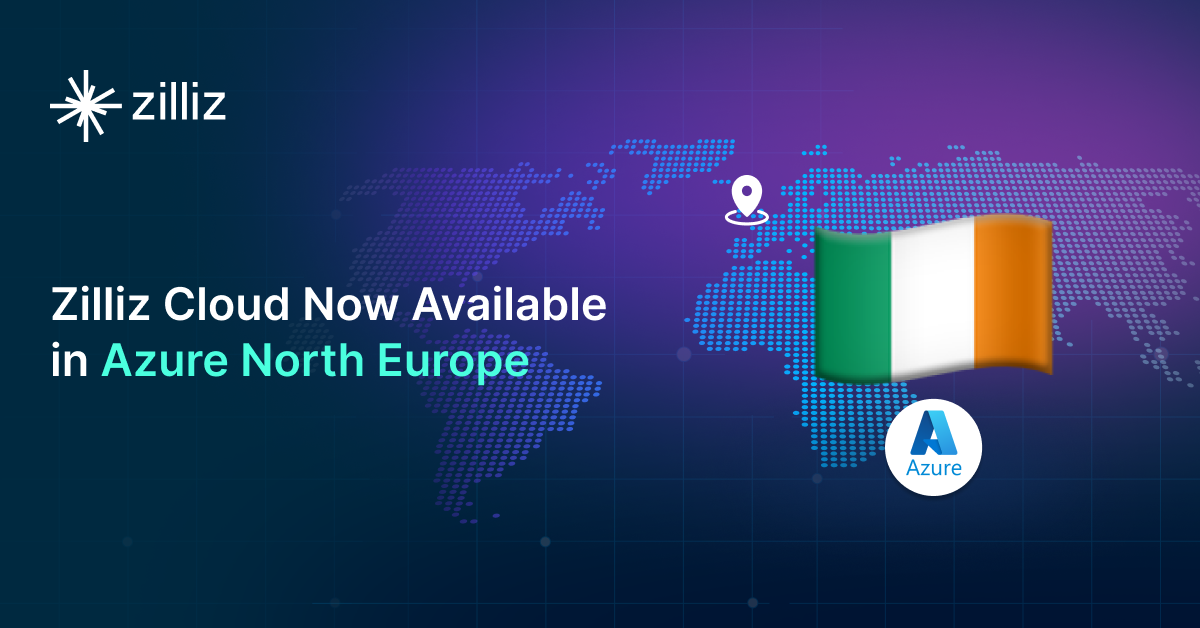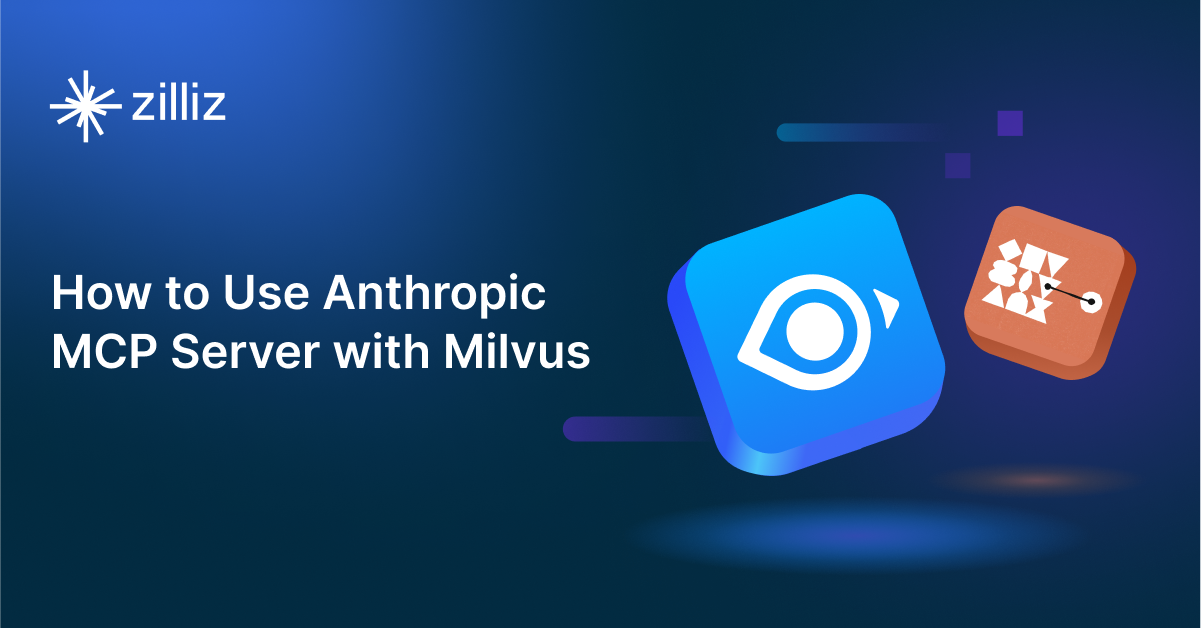Couchbase vs TiDB: Choosing the Right Vector Database for Your AI Apps

What is a Vector Database?
Before we compare Couchbase and TiDB, let's first explore the concept of vector databases.
A vector database is specifically designed to store and query high-dimensional vectors, which are numerical representations of unstructured data. These vectors encode complex information, such as the semantic meaning of text, the visual features of images, or product attributes. By enabling efficient similarity searches, vector databases play a pivotal role in AI applications, allowing for more advanced data analysis and retrieval.
Common use cases for vector databases include e-commerce product recommendations, content discovery platforms, anomaly detection in cybersecurity, medical image analysis, and natural language processing (NLP) tasks. They also play a crucial role in Retrieval Augmented Generation (RAG), a technique that enhances the performance of large language models (LLMs) by providing external knowledge to reduce issues like AI hallucinations.
There are many types of vector databases available in the market, including:
- Purpose-built vector databases such as Milvus, Zilliz Cloud (fully managed Milvus)
- Vector search libraries such as Faiss and Annoy.
- Lightweight vector databases such as Chroma and Milvus Lite.
- Traditional databases with vector search add-ons capable of performing small-scale vector searches.
Couchbase is distributed multi-model NoSQL document-oriented database with vector search capabilities as an add-on. TiDB is a traditional database with vector search capabilities as an add-on.
What is Couchbase? An Overview
Couchbase is a distributed, open-source, NoSQL database that can be used to build applications for cloud, mobile, AI, and edge computing. It combines the strengths of relational databases with the versatility of JSON. Couchbase also provides the flexibility to implement vector search despite not having native support for vector indexes. Developers can store vector embeddings—numerical representations generated by machine learning models—within Couchbase documents as part of their JSON structure. These vectors can be used in similarity search use cases, such as recommendation systems or retrieval-augmented generation both based on semantic search, where finding data points close to each other in a high-dimensional space is important.
One approach to enabling vector search in Couchbase is by leveraging Full Text Search (FTS). While FTS is typically designed for text-based search, it can be adapted to handle vector searches by converting vector data into searchable fields. For instance, vectors can be tokenized into text-like data, allowing FTS to index and search based on those tokens. This can facilitate approximate vector search, providing a way to query documents with vectors that are close in similarity.
Alternatively, developers can store the raw vector embeddings in Couchbase and perform the vector similarity calculations at the application level. This involves retrieving documents and computing metrics such as cosine similarity or Euclidean distance between vectors to identify the closest matches. This method allows Couchbase to serve as a storage solution for vectors while the application handles the mathematical comparison logic.
For more advanced use cases, some developers integrate Couchbase with specialized libraries or algorithms (like FAISS or HNSW) that enable efficient vector search. These integrations allow Couchbase to manage the document store while the external libraries perform the actual vector comparisons. In this way, Couchbase can still be part of a solution that supports vector search.
By using these approaches, Couchbase can be adapted to handle vector search functionality, making it a flexible option for various AI and machine learning tasks that rely on similarity searches.
What is TiDB? An Overview
TiDB, developed by PingCAP, is an open-source, distributed SQL database that offers hybrid transactional and analytical processing (HTAP) capabilities. It is MySQL-compatible, making it easy to adopt for teams already familiar with the MySQL ecosystem. TiDB's distributed SQL architecture provides horizontal scalability like NoSQL databases while retaining the relational model of SQL databases, making it highly flexible for handling both transactional and analytical workloads.
One of TiDB's core strengths is its HTAP architecture, which allows it to process transactional (OLTP) and analytical (OLAP) workloads in a single database, reducing the need for separate systems. Additionally, TiDB's MySQL compatibility makes it easy to integrate into existing environments that rely on MySQL without significant changes to the application code. The database also features auto-sharding, automatically distributing data across nodes to improve read and write performance while maintaining strong consistency.
TiDB supports vector search through integration with external libraries and plugins, enabling efficient management and querying of vectorized data. This feature, combined with TiDB's HTAP architecture, makes it a versatile option for businesses needing vector search capabilities alongside transactional and analytical workloads. The distributed architecture of TiDB allows it to handle large-scale vector queries once the necessary configurations are in place.
While including vector search functionalities in TiDB requires additional configuration, the system's SQL compatibility allows developers to combine vector search with traditional relational queries. This flexibility makes TiDB suitable for complex applications that require both vector search and relational database capabilities, offering a comprehensive solution for diverse data management needs.
Key Differences Between Couchbase and TiDB for Vector Search
Search Methodology:
Couchbase adapts its Full Text Search (FTS) for vector search by converting vector data into searchable fields. It also allows storing raw vector embeddings and performing similarity calculations at the application level. TiDB, on the other hand, relies on integration with external libraries and plugins for vector search. This means Couchbase offers more built-in options for vector search, while TiDB's approach may require additional setup but could potentially leverage specialized vector search libraries.
Data Handling:
Couchbase is a NoSQL database that excels at handling JSON documents, making it well-suited for semi-structured data. It can store vector embeddings within JSON structures. TiDB is a distributed SQL database with a hybrid transactional and analytical processing (HTAP) architecture. It manages structured data in a relational model while also supporting vector data through its integrations. TiDB's SQL compatibility may make it easier to work with traditional structured data alongside vector data.
Scalability and Performance:
Both databases offer distributed architectures for scalability. Couchbase provides horizontal scaling for its NoSQL operations, including vector search capabilities. TiDB features auto-sharding, automatically distributing data across nodes for improved performance. TiDB's HTAP architecture allows it to handle both transactional and analytical workloads efficiently. For vector search specifically, performance would depend on the chosen implementation method in Couchbase and the external libraries used with TiDB.
Flexibility and Customization:
Couchbase offers flexibility in how vector search is implemented, allowing developers to choose between using FTS, application-level calculations, or integration with external libraries. TiDB's SQL compatibility combined with vector search capabilities provides flexibility in combining traditional relational queries with vector operations. TiDB may offer more straightforward options for complex queries that involve both relational and vector data.
Integration and Ecosystem:
Couchbase integrates well with various data processing tools. TiDB, being MySQL-compatible, easily integrates into environments that use MySQL. It also works with external vector search libraries. TiDB's integration might be smoother for teams already working with MySQL-based systems.
Ease of Use:
Couchbase may have a steeper learning curve for teams new to NoSQL databases but offers multiple approaches to implement vector search. TiDB's MySQL compatibility could make it easier to adopt for teams familiar with SQL databases. However, setting up vector search in TiDB might require additional configuration steps.
Cost Considerations:
Both databases are open-source, but operational costs can vary. Couchbase's costs depend on the scale of deployment and features used. TiDB's costs would be influenced by the resources needed for its HTAP architecture and any additional vector search integrations. Both offer enterprise versions with additional features, which would affect pricing.
Security Features:
Couchbase provides features like encryption, authentication, and access control. TiDB, as an enterprise-grade database, likely offers similar security capabilities. The specific security features for vector search would depend on the implementation method in Couchbase and the chosen external libraries in TiDB.
When to Choose Each Technology
Couchbase:
Choose Couchbase for applications that need to store and search vector embeddings within JSON documents. It's suitable for AI and machine learning tasks that rely on similarity searches, especially for recommendation systems or retrieval-augmented generation based on semantic search. Couchbase is a good fit for projects that require a NoSQL database with vector search capabilities for cloud, mobile, AI, or edge computing applications. It offers flexibility in implementing vector search through various approaches.
TiDB:
Choose TiDB when you need a SQL database that can handle both transactional and analytical processing alongside vector search capabilities. It's ideal for teams working in a MySQL environment who want to add vector search without significant changes to their application code. TiDB is suitable for complex applications that need to combine vector search with traditional relational queries. It's a good option for medium-scale vector queries that also require strong consistency and auto-sharding across distributed nodes. TiDB offers a comprehensive solution for diverse data management needs, including structured data and vector search.
Conclusion:
When choosing between Couchbase and TiDB for vector search, consider your specific data management needs and existing infrastructure. Couchbase is a good choice if you require a flexible NoSQL solution that can handle JSON documents with embedded vector data, and offers multiple approaches to implement vector search. It's particularly suited for AI and machine learning tasks involving similarity searches. On the other hand, TiDB is the better option if you need a SQL-compatible database that can handle both transactional and analytical workloads alongside vector search capabilities. TiDB's strength lies in its ability to combine traditional relational queries with vector operations, making it suitable for complex applications that require both structured data management and vector search functionality. Both databases offer scalability and can handle large datasets, but they cater to different use cases and data models.
While this article provides an overview of Couchbase and TiDB, it's key to evaluate these databases based on your specific use case. One tool that can assist in this process is VectorDBBench, an open-source benchmarking tool designed for comparing vector database performance. Ultimately, thorough benchmarking with specific datasets and query patterns will be essential in making an informed decision between these two powerful, yet distinct, approaches to vector search in distributed database systems.
Using Open-source VectorDBBench to Evaluate and Compare Vector Databases on Your Own
VectorDBBench is an open-source benchmarking tool designed for users who require high-performance data storage and retrieval systems, particularly vector databases. This tool allows users to test and compare the performance of different vector database systems such as Milvus and Zilliz Cloud (the managed Milvus) using their own datasets and determine the most suitable one for their use cases. Using VectorDBBench, users can make informed decisions based on the actual vector database performance rather than relying on marketing claims or anecdotal evidence.
VectorDBBench is written in Python and licensed under the MIT open-source license, meaning anyone can freely use, modify, and distribute it. The tool is actively maintained by a community of developers committed to improving its features and performance.
Download VectorDBBench from its GitHub repository to reproduce our benchmark results or obtain performance results on your own datasets.
Take a quick look at the performance of mainstream vector databases on the VectorDBBench Leaderboard.
Read the following blogs to learn more about vector database evaluation.
Further Resources about VectorDB, GenAI, and ML
- What is a Vector Database?
- What is Couchbase**? An Overview**
- What is TiDB? An Overview
- Key Differences Between Couchbase and TiDB for Vector Search
- When to Choose Each Technology
- Conclusion:
- Using Open-source VectorDBBench to Evaluate and Compare Vector Databases on Your Own
- Further Resources about VectorDB, GenAI, and ML
Content
Start Free, Scale Easily
Try the fully-managed vector database built for your GenAI applications.
Try Zilliz Cloud for FreeKeep Reading

Zilliz Cloud Now Available in Azure North Europe: Bringing AI-Powered Vector Search Closer to European Customers
The addition of the Azure North Europe (Ireland) region further expands our global footprint to better serve our European customers.

Build for the Boom: Why AI Agent Startups Should Build Scalable Infrastructure Early
Explore strategies for developing AI agents that can handle rapid growth. Don't let inadequate systems undermine your success during critical breakthrough moments.

How to Use Anthropic MCP Server with Milvus
Discover how Model Context Protocol (MCP) pairs with Milvus to eliminate AI integration hassles, enabling smarter agents with seamless data access and flexibility.
The Definitive Guide to Choosing a Vector Database
Overwhelmed by all the options? Learn key features to look for & how to evaluate with your own data. Choose with confidence.